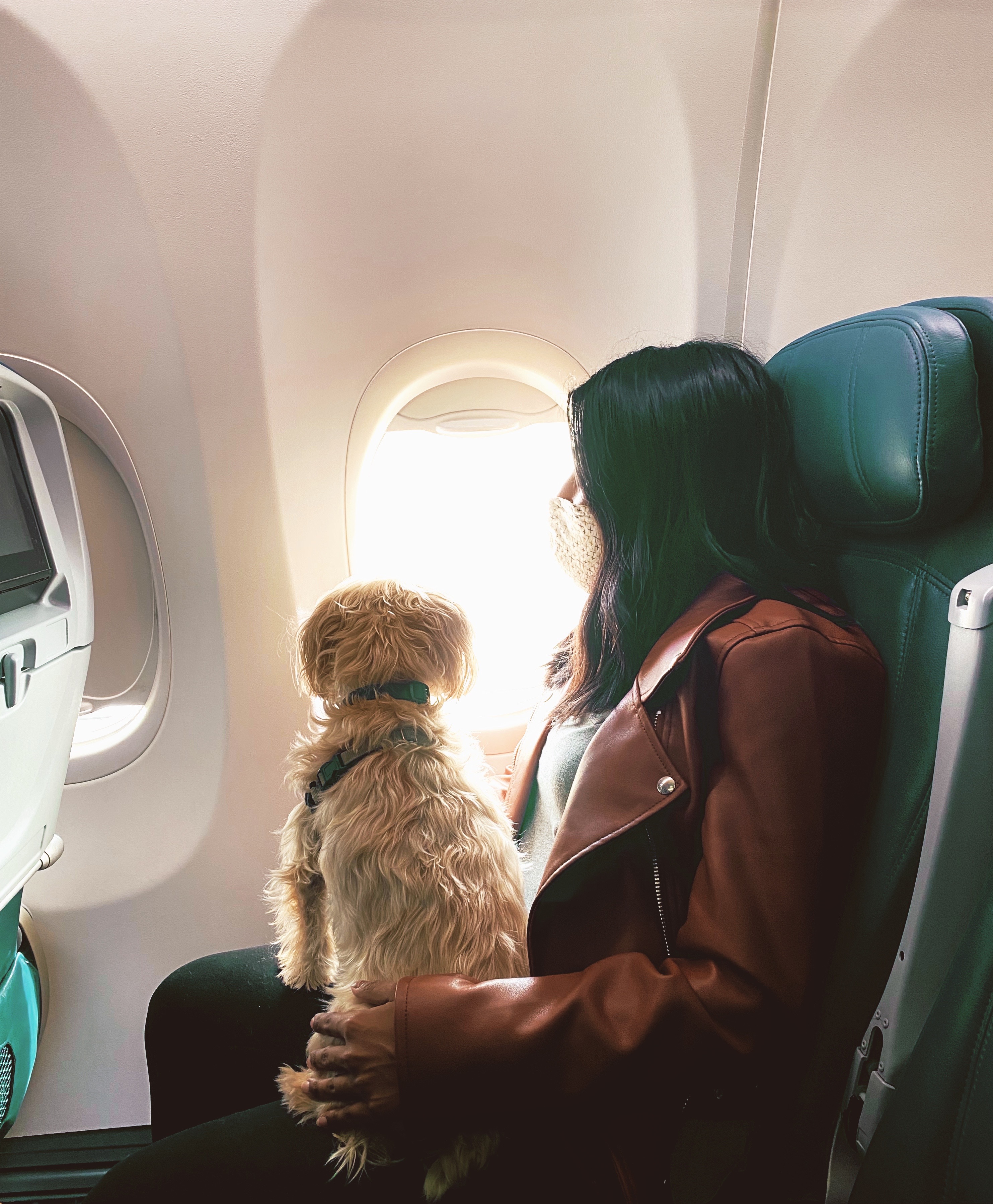
Flying with your dog for the first time can be overwhelming and make you nervous as you anticipate what to expect. You will do great with this ultimate guide that includes all the tips for flying with your dog. Traveling with Teddy has been a rewarding experience for me! I absolutely love seeing him explore new places and he enjoys visiting my family in Pennsylvania. We have traveled to over 20 cities together and made memories I will cherish forever. One of the questions I get frequently is how I travel with my dog on a plane. I put together the ultimate guide for flying domestic with your dog in cabin. It includes tips on how to prepare your dog before flying, what to expect in the airport and plane during flight and what to do after your flight is over.
My first time flying with my dog gave me anxiety because I hadn’t read any tips and didn’t know what to anticipate. I hope these tips will give you peace of mind and make flying with your dog much easier! After a few more flight your dog will become a travel pro.
Flying With Emotional Support Dog
Previous to recent changes by the U.S Department of Transportation, Teddy flew as my emotional support animal. DOT now defines “a service animal as a dog that is individually trained to do work or perform tasks for the benefit of a person with a disability” and no longer recognize ESA as service animals. This does not mean you can not fly with your dog anymore! You can either train your dog to be a service dog that performs tasks for your disability or pay to have your dog fly with you in cabin.
The Ultimate Guide For Traveling With A Dog On A Plane
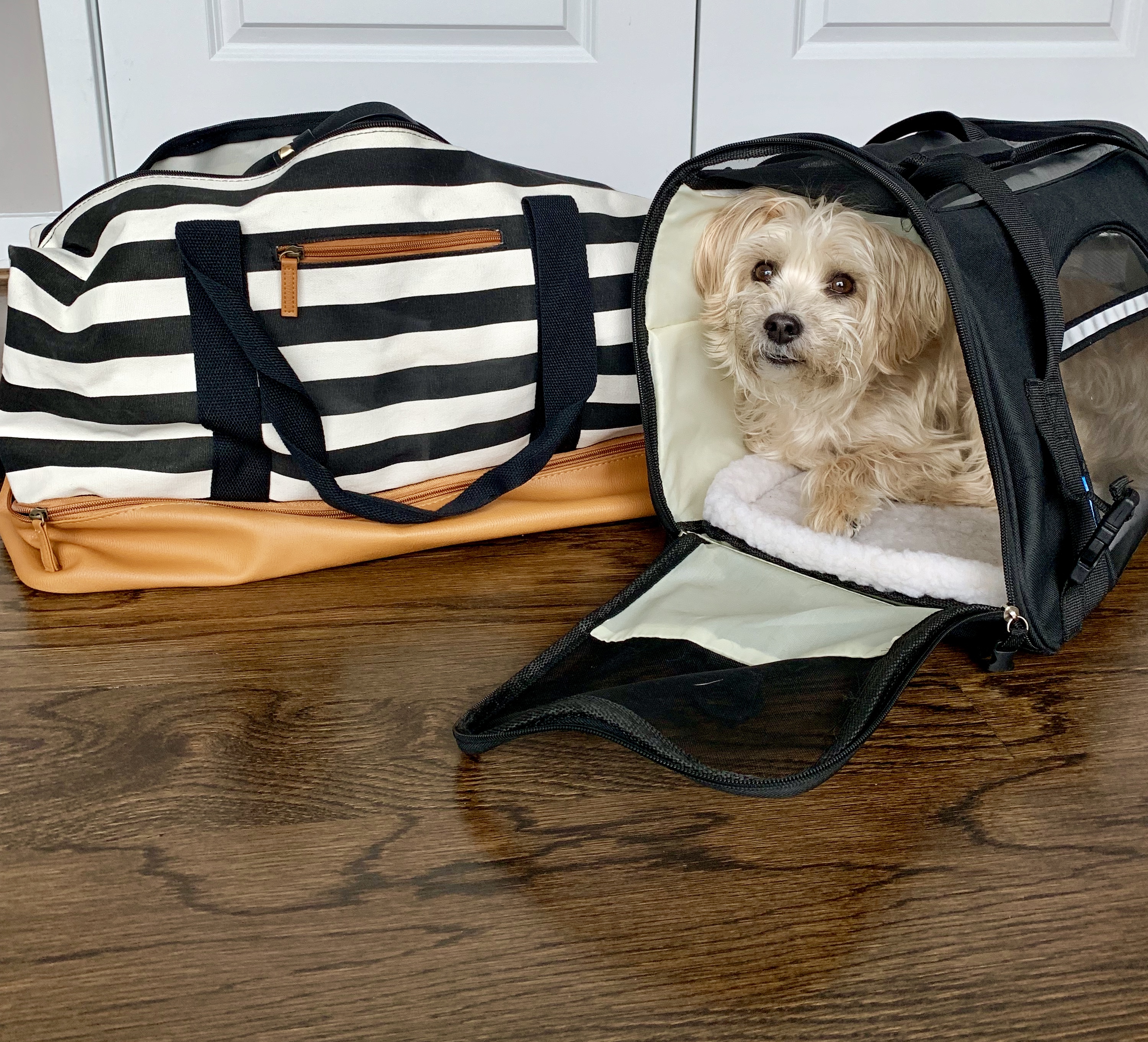
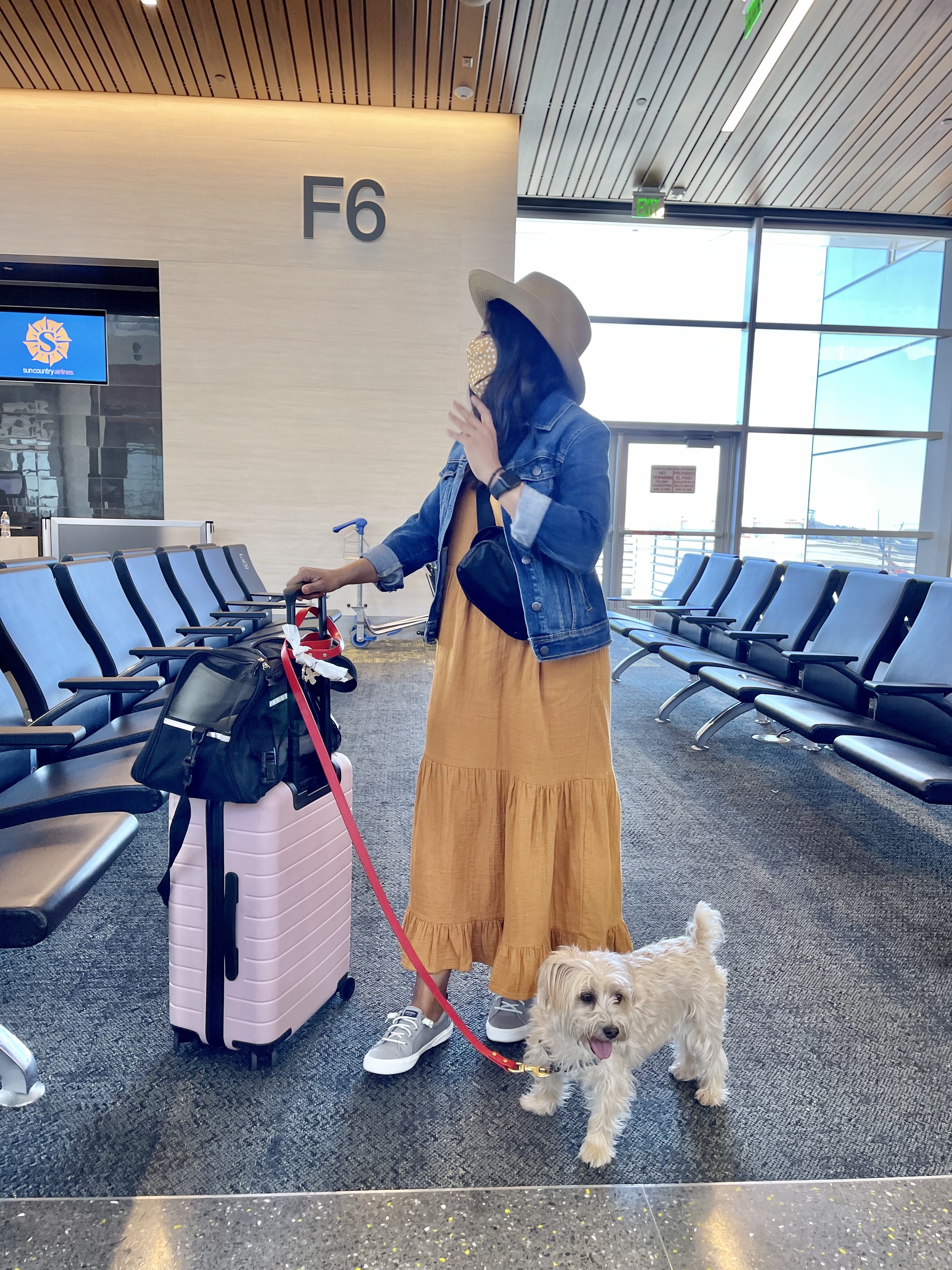

Traveling To Sedona? Find All The Best Instagrammable Spots To Take Photos Here!
Where To Start When Flying With Your Dog
To start, you will need to research airline’s pet policy to see if your dog fits into their guidelines and can fly with you. Things to consider are size, weight and breed of dog. Some airlines do not accept pit bulls or brachycephalic breeds such as Pugs, French Bull Dogs or Shih-tzus. Some Airlines, such as JetBlue have a weight limit to 20 pounds. American Airlines, Delta and United have no weight restrictions but Delta’s pet policy states, “Your pet must be small enough to fit comfortably in a kennel and it must fit under the seat.”
To learn more about flying with a larger dog in cabin read this post.
After you have booked your flight, you will have to call your airlines to make a reservation for your dog to fly with you in-cabin. Most airlines restrict the amount of dog reservations per flight so it’s best to call early. You do not pay until you check-in at the counter on the day of the flight.
Tip: You will not be able to check-in 24hours in advance on the day of your flight and will have to check-in at the counter.
Purchase an airline approved pet carrier that fits into the requirements of the airline’s pet policy. Most airlines approve hard-sided or soft-sided kennels with dimensions that fit under the seat comfortably. Use a measuring tape to ensure your pet carrier is the correct size. Although I have tried many fancy pet carriers, my go-to is a generic airline approved pet carrier that has a sherpa lining for comfort that I found on Amazon here. Some other great choices include Sleepypod’s Air in-cabin pet carrier and Mr. Peanut’s soft sided pet carrier.
Shop The Post
Tip: Pets in cabin carrier will count as your one carry-on item. You are permitted to bring one other personal item onboard the plane.
Tips For How To Prepare Your Dog For A Flight
After selecting the right pet carrier, you want to introduce your dog to it and have him or her be comfortable with it. Similar to crate training, start by leaving the door open and giving treats or meals in the travel bag until your dog is comfortable with the door being closed. Then extend the amount of time they are in their pet carrier over days or weeks. For example, after Teddy got used to his travel bag I would let him sit in his bag for longer periods of time while I watched tv at night and reward him when he did not whine. I recommend taking your travel bag out to a new place to see how your dog reacts.
Tip: Not all dogs are comfortable being in new spaces, so it is best to practice to see how your dog reacts to new places before you jet set. Remember, some dogs may be happiest at home.
A few weeks before departure, you should visit your vet to get a travel certificate and ensure all vaccinations are up-to-date. Airlines have never asked me to present my travel certificate even when I had delays. You may want to ask your vet about using calming medication for your flight such as Xanax, CBD or Benadryl. I gave Teddy Xanax the first two flights. By the third flight, I had forgotten the medication at home but Teddy did perfectly fine. I now keep CBD chews on hand.
Tip: Keep in mind, some medications take time to start working.
What To Expect On The Day Of Departure
On the day of departure, it is a good idea to limit food and water before your departure time. Consider exercising your dog with a long walk or playtime to burn off energy. Leave plenty of time to check-in at the counter. The airline representative may ask you to present your travel certificate, up-to-date vaccination record or even want to see your dog in it’s travel carrier. You will charged a pet fee to travel with your dog which is around $125+ depending on the airlines. I usually let Teddy walk and stretch his legs through the airport even though I am technically supposed to keep him in his pet carrier.
Going through TSA security is pretty standard. You can expect to put your pet carrier with the rest of your luggage and walk through the x-ray machine where they will swab your hand. Many airports now have pet relief areas throughout the terminals. My experience with them have not been the best as they always seem dirty.
Tip: Accidents can happen in the airport despite your best attempts. Carry extra poop bags.
I recommend going with the first group called to get on the plane so you have more time to get settled onto the aircraft. Rules are to keep your dog in the travel carrier at all times. In full disclosure, I have taken Teddy out of his bag on many occasions. Some flight attendants do not care and some will tell you to put your dog back in their carrier. I usually restrict my water during flights so I do not have to make bathroom trips and leave Teddy alone.
Tip: The cabin floor can get very cold or hot. Most times Teddy runs hot and I keep his travel bowl with me to give him some water.
After Your Flight
Your dog may need to use the pet relief area in the terminal and stretch their legs. Give your dog some time to adjust to their new surroundings as they can get jet lag too.
Tip: Remember to take a deep breathe and enjoy the trip!
Comment below & Tell me where you plan to Fly with your dog next!
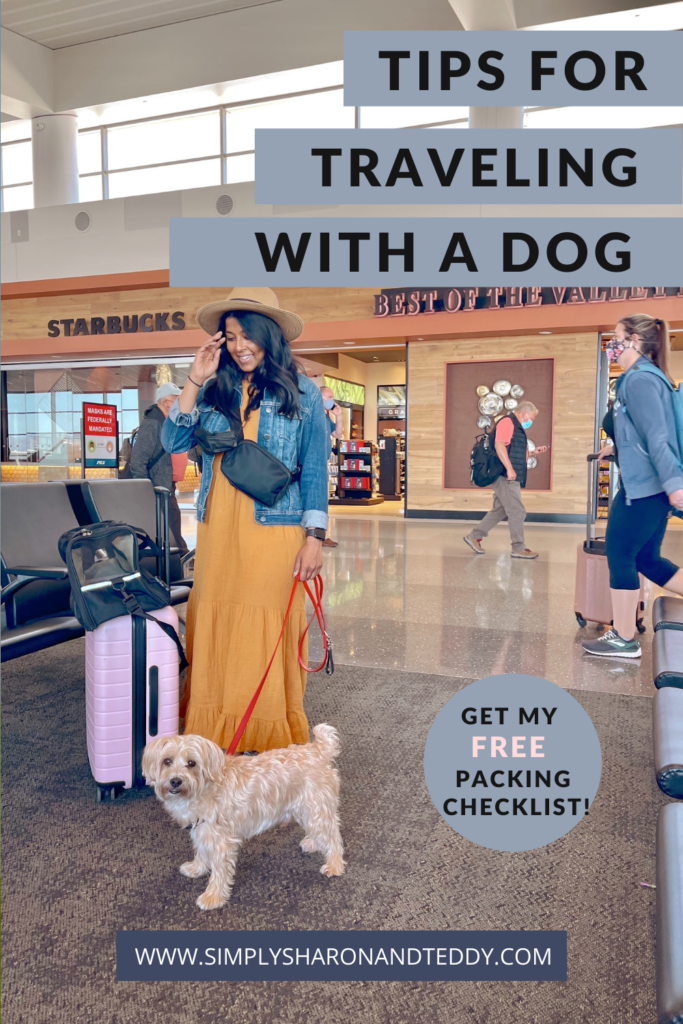
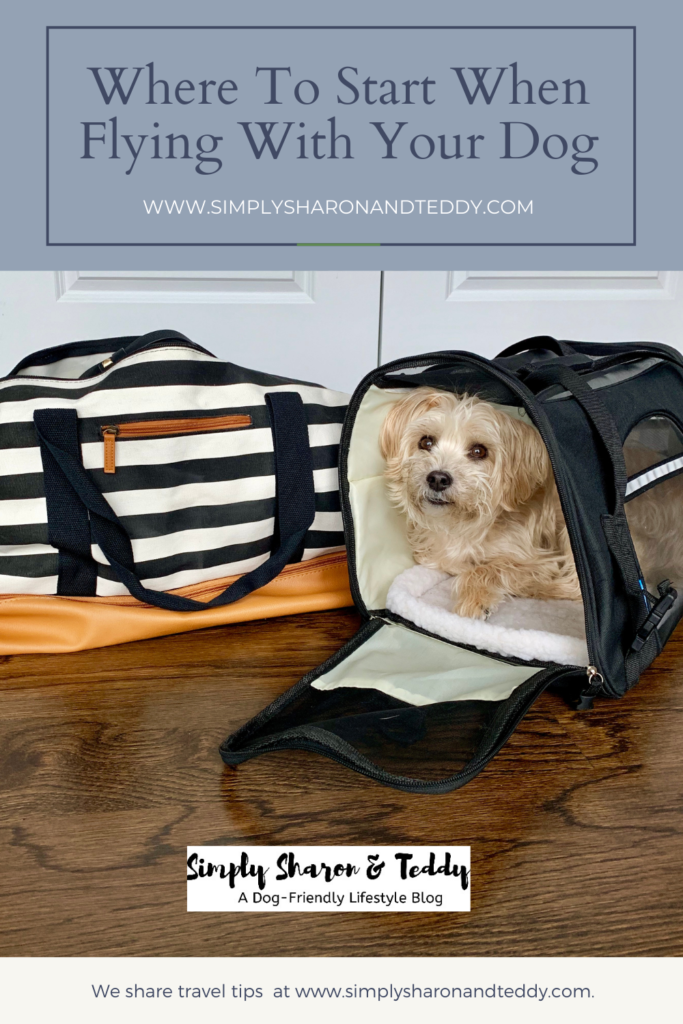
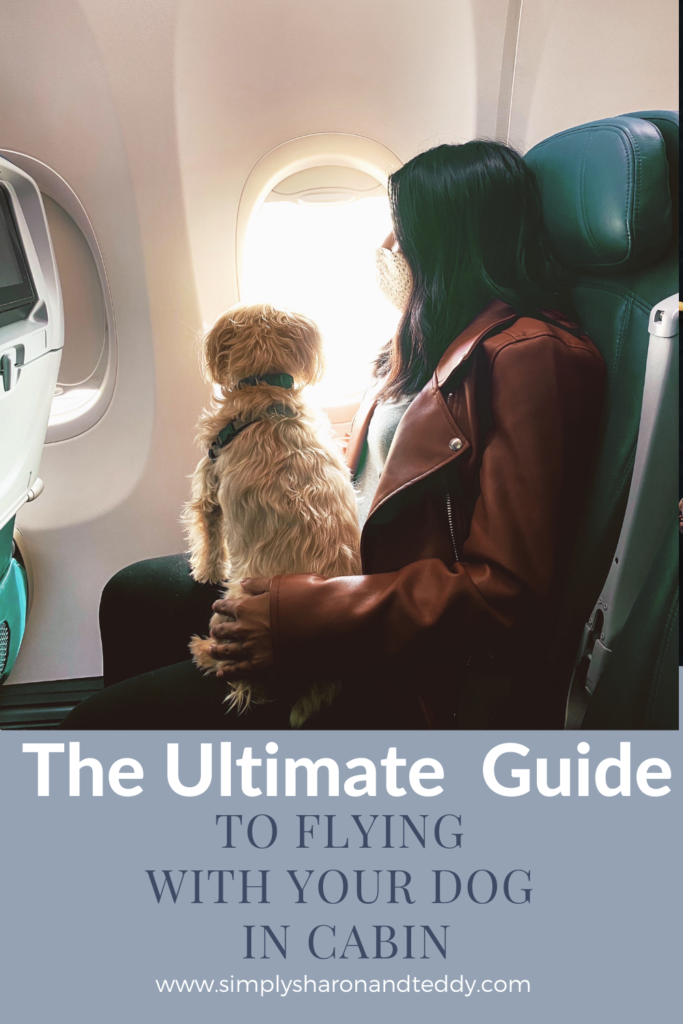
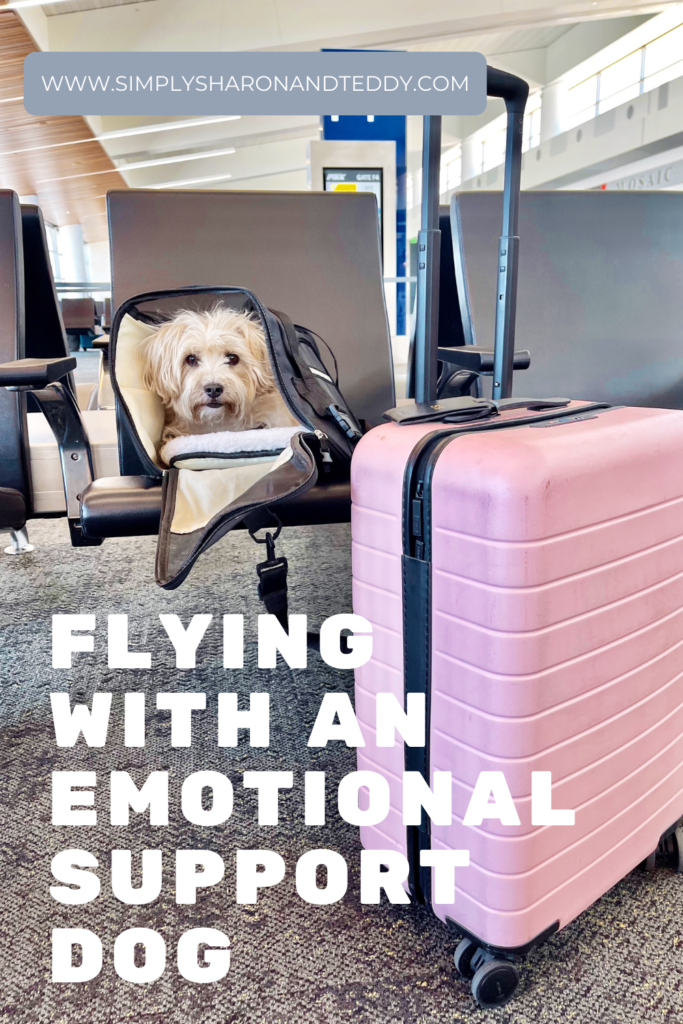



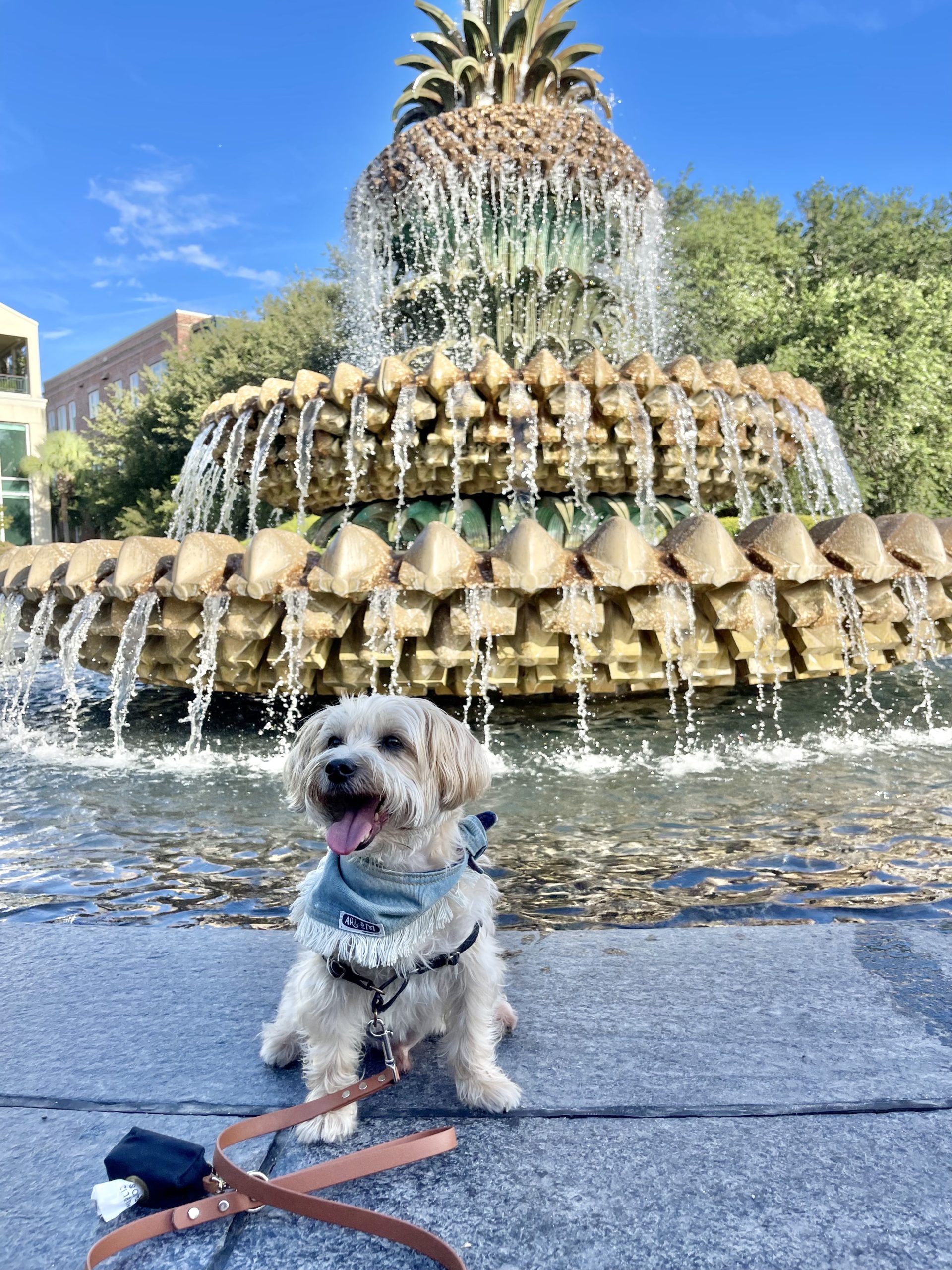
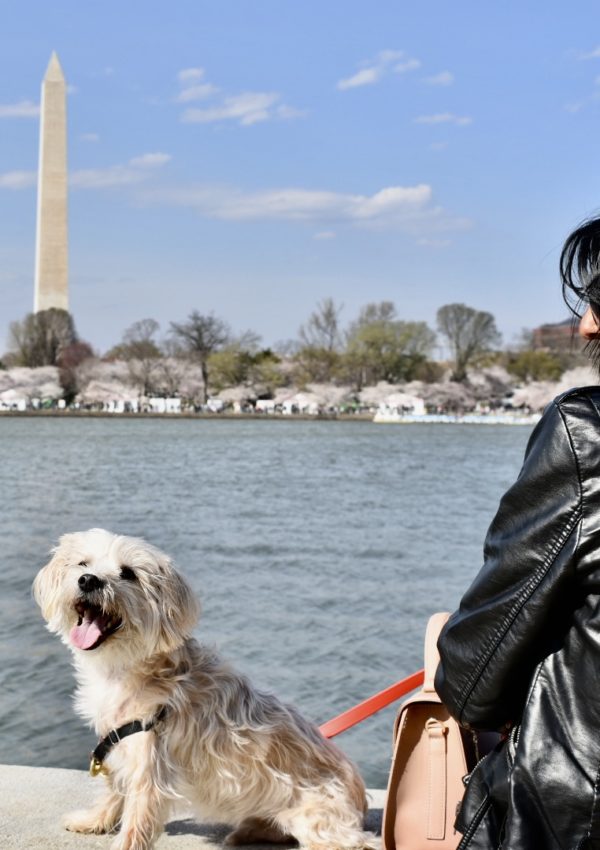

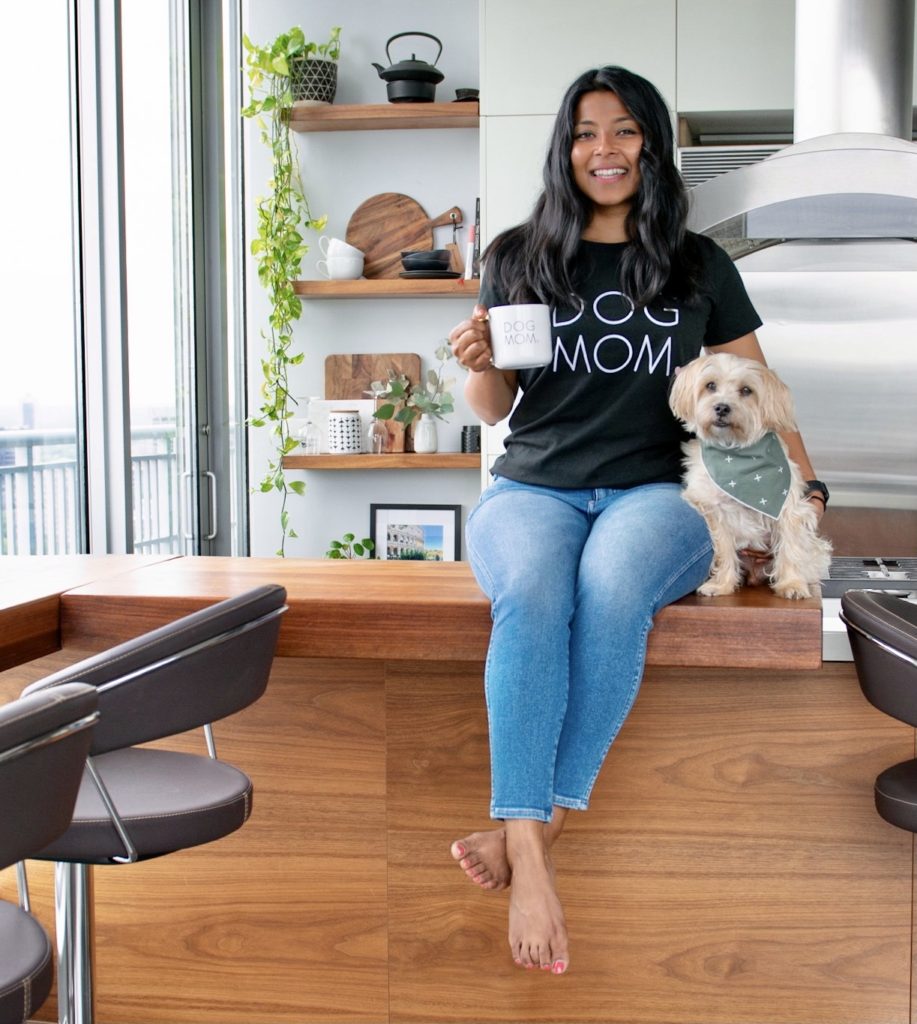
Thanks for this guide! It’s been six years since we traveled in the plane and I’ve been quite nervous. We leave tomorrow for Chicago. Thank u!!!
Safe Travels Rachel! Have so much fun in Chicago!